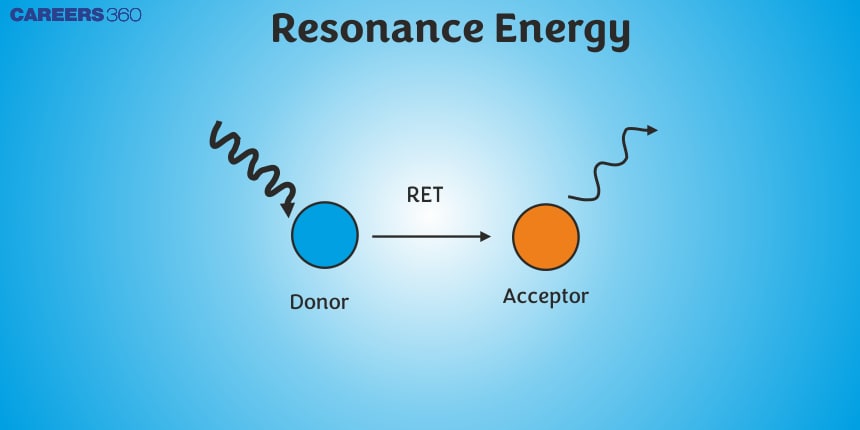Resonance Energy
Resonance enthalpy is defined in chemical thermodynamics as the energy stabilization resulting from electron delocalization in a molecule. Such a phenomenon occurs in the case of the formation of a certain molecule through two or more valid Lewis structures, called resonance structures, that differ only by the distribution of electrons. The real structure of the molecule is a hybrid of these resonance forms and is more stable than any form taken individually. Resonance enthalpy refers to the amount of energy that is stabilized, hence giving an idea about the stability and reactivity of the molecule. These types of concepts are very important in the study of behavior for conjugated systems, aromatic compounds, and delocalized electron molecules.
- Resonance Enthalpy
- Calculation of Resonance Energy
- Some Solved Examples
- Summary

Resonance Enthalpy
The theoretical difference in molecular energy between a resonance hybrid and the 'most stable' resonance contributor (if this resonance contributor existed as a real molecule). In other words, the stability gain by electron delocalization is due to resonance versus the absence of such delocalization. The resonance energy of benzene is 36 kcal mol-1.
Calculation of Resonance Energy
(1) Resonance energy can be calculated in terms of the heat of the formation data:
ResonanceEnergy $=\Delta_{\mathrm{f}} \mathrm{H}_{\text {theoretical }}^{\circ}-\Delta_{\mathrm{f}} \mathrm{H}_{\text {actual }}^{\circ}$
(2) Resonance energy can be calculated in terms of the heat of combustion data:
ResonanceEnergy $=\Delta_c \mathrm{H}_{\text {actual }}^{\circ}-\Delta_c \mathrm{H}_{\text {theoretical }}^{\circ}$
(3) Resonance energy can be calculated in terms of the heat of hydrogenation data:
ResonanceEnergy $=\Delta_{\text {hydrogenation }} H_{\text {actual }}^{\circ}-\Delta_{\text {hydrogenation }} H_{\text {theoretical }}^{\circ}$
Note: Resonance Energy is always a Positive Number. Use this fact to quickly calculate Resonance Energy using the above formulae.
The calculation of Resonance energy in terms of Heat of hydrogenation is given below:

Recommended topic video on(Resonance Energy)
Some Solved Examples
Example 1: The enthalpy of hydrogenation of cyclohexene is $-120 \mathrm{~kJ} / \mathrm{mol}$. If the resonance energy of benzene is $-150 \mathrm{~kJ} / \mathrm{mol}$. Enthalpy of hydrogenation of benzene (in KJ/mol) is?
1)-270
2) -210
3)-360
4)-420
Solution
The resonance energy is calculated as the $\Delta \mathrm{H}_{\mathrm{res}}=\Delta \mathrm{H}_{\mathrm{exp}}-\Delta \mathrm{H}_{\mathrm{cal}}$
So we have given, the resonance energy of Benzene as $\Delta \mathrm{H}_{\mathrm{res}}=-150 \mathrm{~kJ} / \mathrm{mol}$ And enthalpy of hydrogenation of cyclohexene is $-120 \mathrm{~kJ} / \mathrm{mol}$.
This means that the energy to break one C=C bond is $-120 \mathrm{~kJ} / \mathrm{mol}$.
In benzene we have 3 C=C bonds so $\Delta \mathrm{H}_{\text {cal }}=3 \times(-120) \mathrm{kJ} / \mathrm{mol}$
Now putting values in $\Delta \mathrm{H}_{\mathrm{res}}=\Delta \mathrm{H}_{\mathrm{exp}}-\Delta \mathrm{H}_{\mathrm{cal}}$ equation.
$-150=\Delta \mathrm{H}_{\exp }-(-360)$
$\Delta \mathrm{H}_{\exp }=-210 \mathrm{~kJ} / \mathrm{mol}$
Hence, option number (2) is correct
Example 2: Calculate the resonance energy of gaseous benzene (in kJ/mol) from the following data.
$\begin{aligned} & B E(C-H)=416.3 \mathrm{kJmol}^{-1} \\ & B E(C-C)=331.4 \mathrm{kJmol}^{-1} \\ & B E(C=C)=591.1 \mathrm{kJmol}^{-1} \\ & \Delta_{\text {sub }} H(C, \text { graphite })=718.4 \mathrm{kJmol}^{-1} \\ & \Delta_{\mathrm{BE}} H\left(H_2, \mathrm{~g}\right)=435.9 \mathrm{kJmol}^{-1} \\ & \Delta_f H^o(\text { benzene, } \mathrm{g})=82.9 \mathrm{kJmol}^{-1}\end{aligned}$
1) 269.92)
2)-269.9
3)352.8
4)-352.8
Solution
To compute resonance energy, we compare the calculated value with the given one. To calculate, we add the following reactions.
(a) 6 C (graphite) $\longrightarrow 6 \mathrm{C}(\mathrm{g}), \Delta \mathrm{H}=6 \times 718.4$
(b) $3 \mathrm{H}_2(\mathrm{~g}) \longrightarrow 6 \mathrm{H}(\mathrm{g}), \Delta \mathrm{H}=3 \times 435.9$
(c) $6 \mathrm{C}(\mathrm{g})+6 \mathrm{H}(\mathrm{g}) \longrightarrow \mathrm{C}_6 \mathrm{H}_6(\mathrm{~g}), \Delta \mathrm{H}=-3 \times \mathrm{BE}_{(\mathrm{C}-\mathrm{C})}-3 \times \mathrm{BE}_{(\mathrm{C}=\mathrm{C})}-6 \times \mathrm{BE}_{(\mathrm{C}-\mathrm{H})}$
Adding (a+b+c)
The resultant equation will be
6 C (graphite) $+3 \mathrm{H}_2(\mathrm{~g}) \longrightarrow \mathrm{C}_6 \mathrm{H}_6(\mathrm{~g})$
$\Delta_{\mathrm{f}} \mathrm{H}^{\circ}=-\left(3 \mathrm{BE}_{(\mathrm{C}-\mathrm{C})}+3 \mathrm{BE}_{(\mathrm{C}=\mathrm{C})}+6 \mathrm{BE}_{(\mathrm{C}-\mathrm{H})}\right)+(6 \times 718.4+3 \times 435.9)$
putting the value of the respective bond energy values
$\Delta_{\mathrm{f}} \mathrm{H}^{\circ}=-(3 \times 331.4+3 \times 591.1+6 \times 416.3)+(6 \times 718.4+3 \times 435.9)$
$\Delta_{\mathrm{f}} \mathrm{H}^{\circ}=352.8 \mathrm{~kJ} \mathrm{~mole}^{-}$
We have given,
$\Delta_{\mathrm{f}} \mathrm{H}^{\circ}($ benzene, g$)=82.9 \mathrm{~kJ} \mathrm{~mol}^{-}$
The difference gives us the resonance energy, which is equal to
Resonance Energy $=\Delta_{\mathrm{f}} \mathrm{H}^{\circ}(\text { benzene, } \mathrm{g})_{\text {theoretical }}-\Delta_{\mathrm{f}} \mathrm{H}^{\circ}(\text { benzene, } \mathrm{g})_{\text {actual }}$
$\therefore$ Resonance Energy $=352.8-82.9=269.9 \mathrm{~kJ} \mathrm{~mol}^{-}$
Hence, the answer is the option (1).
Example 3: Given that:
(i) $\Delta_f \mathrm{H}^0$ of $\mathrm{N}_2 \mathrm{O}$ is $82 \mathrm{~kJ} \mathrm{~mol}^{-1}$
(ii) Bond energies of $N \equiv N, N=N, O=O$ and $N=O$
are $946,418,498$ and $607 \mathrm{kJmol}^{-1}$ respectively.
The resonance energy of $\mathrm{N}_2 \mathrm{O}$ is:
1) $-88 k J$ (Correct)
2)$-66 k J$
3)$-62 k J$
4)$-44 k J$
Solution
The enthalpy of formation of $\mathrm{N}_2 \mathrm{O}$ is given as 82 kJ/mol
The reaction could be written as.
$N_2(g)+\frac{1}{2} O_2(g) \rightarrow N_2 O(g) \Delta_f H=82 \mathrm{~kJ} / \mathrm{mol}$
Now Calculating bond dissociation enthalpy, $\Delta_{\text {cal }} H=\sum$ Reactants $-\sum$ Products
$\Delta_{\text {cal }} H=\left(946+\frac{1}{2} 498\right)-(418+607)$
$\Delta_{\text {cal }} H=170 \mathrm{~kJ} / \mathrm{mol}$
Resonance energy = Observed heat of formation - Calculated heat of formation
Resonance energy = 82 - 170 = -88 kJ/mol
Example 4: The difference in energy between the actual structure and the lowest energy resonance structure for the given compound is :
1)electromeric energy
2)ionization energy
3)hyperconjugation energy
4) resonance energy
Solution
The difference in energy between the actual structure and the lowest energy resonance structure for the given compound is called resonance energy.
Hence, the answer is the option (4).
Summary
Resonance enthalpy is an important concept in chemical thermodynamics, highlighting the stabilization energy from electron delocalization in molecules. It arises when a molecule can be described by multiple resonance structures, resulting in a hybrid structure that is more stable than any individual form. This stabilization is quantified as resonance enthalpy, which helps in understanding the increased stability of conjugated systems and aromatic compounds. Resonance enthalpy is essential for predicting the thermodynamic properties and reactivity of such molecules, indicating that the actual molecular structure is lower in energy than expected from any single resonance structure. This concept underscores the importance of electron delocalization in enhancing molecular stability and influencing chemical reactions.
Frequently Asked Questions (FAQs)
Also Read
05 Aug'25 12:15 PM
31 Jul'25 02:08 PM
02 Jul'25 08:10 PM
02 Jul'25 08:05 PM
02 Jul'25 08:05 PM
02 Jul'25 06:32 PM
02 Jul'25 06:31 PM
02 Jul'25 06:31 PM
02 Jul'25 06:31 PM
02 Jul'25 06:31 PM
